QuestionQUESTION: Recently, my Veiltail "Skoot" had part of his anal fin turn bright blood red and fall off. when i first purchased him 2 months ago from the pet store, the edge of his tail was a bit frayed, blood- red at the tip. i thougt that something had nibbled its tail while it was at the pet store, then the whole section turnt bright and fell off. I was wrong. it wasnt the result of a bite or nibble, i identified it as fin rot. i immediatley mixed 1 tsp. of salt with one gallon of water and put him in that. today, 2 days later, i went to the pet store because it was my first opportunity since this happened and bought pH test kit, pH decreaser and pH increaser, fin rot medication, and a dropper to add the proper amount of medication to the water. i have already treated his water with the meds and tested th pH, it was at 6.2. i brought it up to 7.3 gradually, then put the fish in the treated water. so thats the (rater long) story behind this all so far, now i am going to list my questions and i hope that you can answer them for help because it would really uppsetting for me to lose any of my pets, i treat them as my children.
1) Should i continue to use my chlorine neurilizer while putting my fish through these treatments?
2) should i test the pH of the water before of after i add the meds?
3) how often should i change my fishs treated water? the package dosnt say.
4) i read somewher that keeping the tank warmer will help recovery. is this true? why or why not and if so, what temperature?
5) can i use my air hose and stone while using these treatments? why or why not?
6) how often should i test the water pH. Iwas thinking of testing it once a week like the package said but wanted a second oppinion.
Thanks in advance. i am sorry if i am being annoying, i am just stressed right now and am a conserned "pet parent".
also, can you please tell me how to prevent fin rot in both goldfish and bettas, it would be much appreciated. also, if i am wrong about anything in the story part i.e. putting them in the 1tsp. salt and 1 gallon water, please tell me. also could you please give me some extra fin rot tips and what to do next time at the first sign of fin rot. Thanks again in adwanced. PS: i just wanted to let you know i DO live in canada in ontario. i just used some random ZIP code to get access to e-mail this. i hope this isnt a problem. if it is i am soooo sorry, i just really need this advise asap.
ANSWER: Hi Sarina
You are not being annoying :) The best way to learn is to ask questions, so don't feel bad asking. And for the zip code thing, I don't know anything about that....so wouldn't worry :) Might just be a statistical thing, I know I get questions from people in other parts of the world, usually the giveaway is when they say their tank is 100 Liters as opposed to gallons lol.
First, I'm going to start with saying stay away from the ph up, down, stuff. Most tank bred fish can handle any ph from 6.0-8.0-some higher and lower then that. A stable ph is much better for a fish then one that fluctuates. Using those chemicals usually makes the ph fluctuate. When you get into changing ph, you have to also know how to deal with the buffering capacity of the water, and the hardness of the water. It's quite confusing, especially when you don't know what you're doing(like me), so it's best to just leave it at whatever ph yours is, and the fish should be fine. Return the chemicals to the store and get your money back.
The salt you added sounds fine, I've seen so many different doses to use, that's one of them. So you're ok there. Fin rot is a bacterial infection, usually brought on by poor water conditions. This obviously started before you bought him since you said the tail was frayed. I'm kind of confused though, because usually the edges will be black or white where it's frayed with fin rot, I've never heard of it being red. So I'm wondering if he maybe developed septicemia as a secondary bacterial infection from it. That's usually characterized as red streaks on the fins or body. I would think that would also cover a fin that's turned red as well. It's an internal infection, the bacteria gets in from a sore or wound on the fish. What I would do, pick up some antibiotic/antibacterial food. Here in the US they sell it at the pet stores, not sure about your country's restrictions up there. You can also buy it online, but it would be better/quicker from the store. The food is important, because it gets the meds inside the fish quickly. I would keep up with the salt treatment, and also pick up a product(hopefully they have it up there as well) called PimaFix. It's a natural remedy, great for fungal and gram negative bacterial infections, and safe to use with other meds. I'd use that in the future for signs of fin rot, as well as a few other diseases if you can catch them early enough. For prevention, be sure to do regular weekly water changes, I usually recommend changing 25% of the water while vacuuming the gravel/substrate good. Also not sure on your tank size, but it's recommended for goldfish to have at least 15 gallons per goldfish, you can get away with 10 gallons per goldie, but really need to stay on top of the water changes, don't overfeed, and have good filtration. Get a test kit to test ammonia, nitrites, and nitrates. They should always read ammonia and nitrites 0 ppm, and nitrates under 20 ppm. That's probably the best thing you can do to avoid diseases and such in the fish.
And for your questions:
1. Yes, use the chlorine remover/dechlorinator whenever you do a water change. That's really the only time you'll need to use it. This will remove the chlorine from the water, which can kill the fish.
2. Just test the ph when you do water changes. I usually don't test mine that often. More important, you should have a test kit for ammonia, nitrite, and nitrates, and the dropper test kits are better/more reliable then the dip stick ones.
3. Good question there. Not sure what product you're using, what exactly do the directions say? And how long does it say to treat?
4. Yes, with most infections it does help to keep it a tad warmer. For tropicals usually it's recommended to bump the temp to 80-84 F. For goldfish, that may be a little warm for them, I'd shoot for about 78 F. I honestly can't say why it helps them, I know with ich, the higher temps will kill off some of the parasites in certain stages.
5. I would use the air stone/hose, especially whenever you raise the temperature of the tank. Oxygen gets depleted in higher temps.
6. Like I said, I'd be more concerned with the other water parameters, ammonia, nitrite, and nitrate. I'd test all of them, including the ph when you do water changes. But again, I don't advise altering the ph. The fish will adapt to the ph you have them in.
Hope that helps, and if you have any more questions, please ask!!! And good luck!
Christy
---------- FOLLOW-UP ----------
QUESTION: I Dont really have a question, i would like to thank you and tell you i made a mistake. when i first got him his fin tips WERE white, not red and when i asked this, i was already treating skoot with fin rot meds. i caught it too late, and skoot passed away the morning after i sent the first email to you. i do have one question for future repherence though, how much do you know about male bettas? thanks in advance bye
AnswerHi Sarina
I'm sorry he didn't make it! At least you tried and made a good effort to save him. As for bettas, I know pretty much basic info on them. I have a few female bettas I have in my fish tanks. But as far as breeding them though, I know nothing :) If you're thinking of buying one, and haven't already, try checking around for a breeder near you that sells them. I just had a question from someone earlier, and have heard this before, they're usually healthier, will most likely be a better "quality", and they're younger then the ones you get in stores. Here's a pretty good site on them though:
http://www.healthybetta.com/
Christy

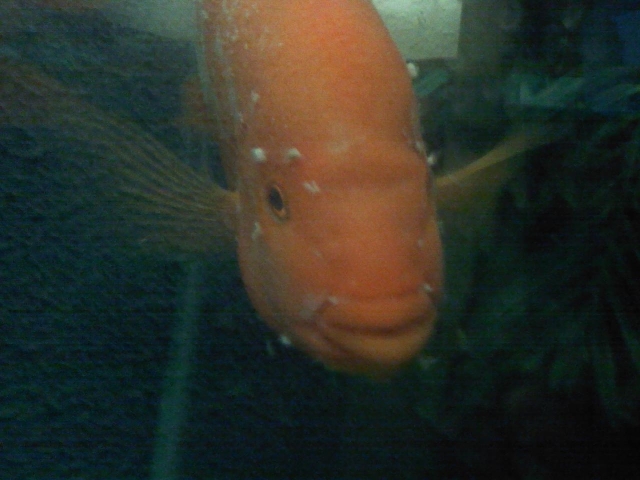 Sick Fish Lucy
QuestionLucy - Red Devil
QUESTION: Hi Nathan,
H
Sick Fish Lucy
QuestionLucy - Red Devil
QUESTION: Hi Nathan,
H
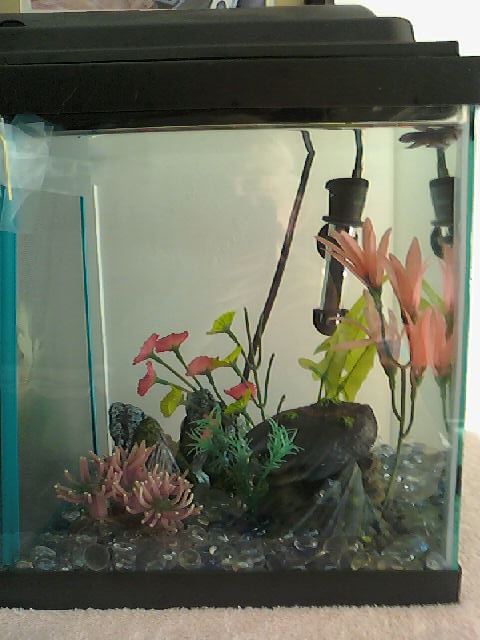 Lethargic Betta Fish
QuestionDorothy
QUESTION: Dear Jaymie,
For the
Lethargic Betta Fish
QuestionDorothy
QUESTION: Dear Jaymie,
For the
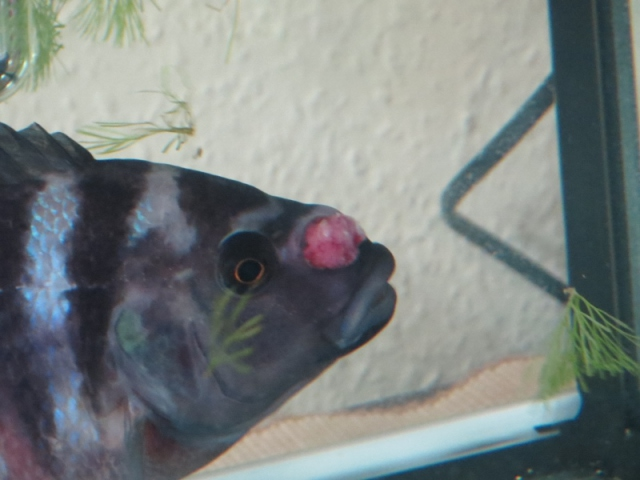 Bumblebee - Ulcer?
Question
Growth? Growth?
Hi Richard,
I hav
Bumblebee - Ulcer?
Question
Growth? Growth?
Hi Richard,
I hav
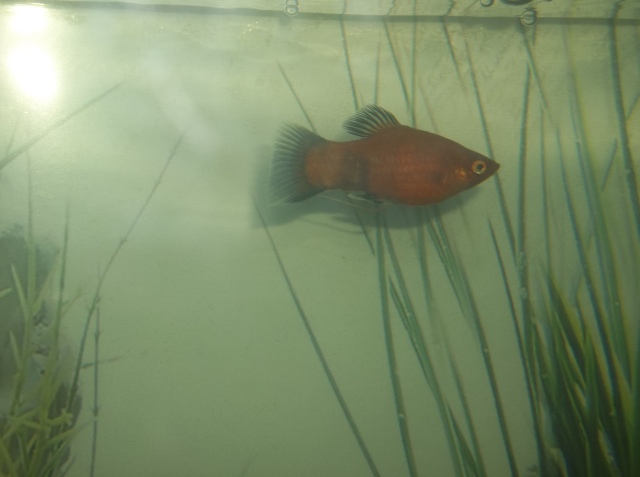 RED WAG PLATY SICK?
QuestionQUESTION: I HAVE A 60 GAL TANK WITH BRACKISH WA
RED WAG PLATY SICK?
QuestionQUESTION: I HAVE A 60 GAL TANK WITH BRACKISH WA
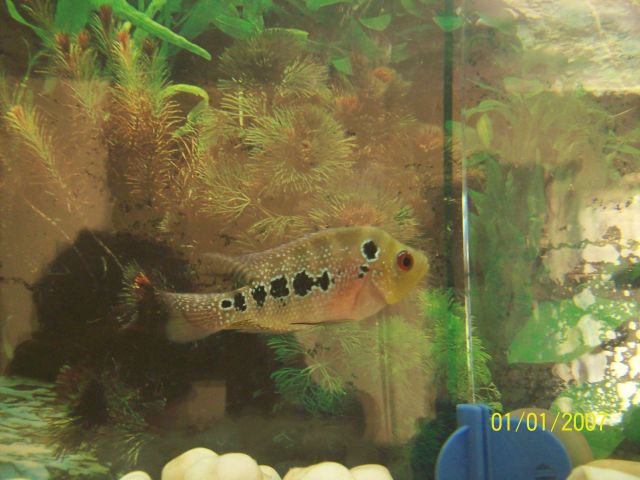 IS my flower horn male or female
Question
my flower horn
IS my flower horn male or femal
IS my flower horn male or female
Question
my flower horn
IS my flower horn male or femal